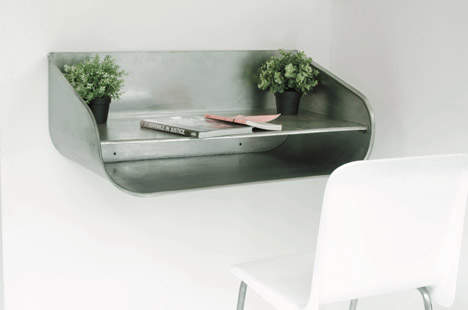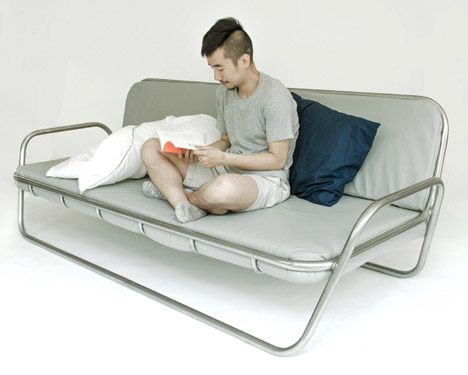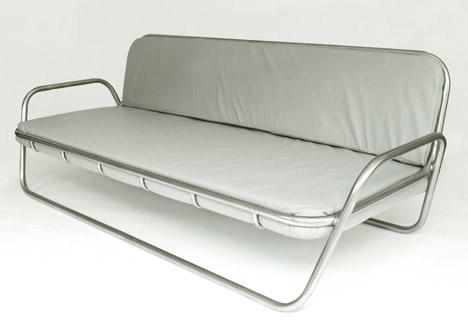US student Kai Lin designs furniture for youth prison cells
New York 2015: Brooklyn industrial design student Kai Lin has created a contemporary furniture set for jail cells in juvenile detention centres in the US.
The desk, chair, and bed are intended to transform "a cold, confined space" into a more comfortable living area, said Lin, who has just graduated from New York's Pratt Institute.

Through his work, Lin aims to promote the idea of juvenile detention centres as places of rehabilitation rather than strictly punishment. "Inspired by Scandinavian correctional facilities, such as Halden Prison in Norway, I created a furniture set for detained youths with an intention of providing a friendly, positive and comfortable living space for them," he told Dezeen.
The minimalist pieces are designed for use in American youth incarceration facilities, where prisoners are typically under the age of 18.

There are nearly 2,000 such facilities in the US. On a given day, more than 54,000 juvenile offenders are housed in correctional facilities, according to the US Department of Justice.
Lin used tubular steel and steel sheet metal – materials commonly used for institutional furniture because of their strength, durability and antibacterial qualities.
The bed and back cushions are covered in a heavy-coated vinyl, another common material in correctional facilities and hospitals, Lin said. The material is anti-flammable, abrasion-resistant and easily cleaned.

Lin, who was raised in China and today lives in Brooklyn, said the idea for the project stemmed from a book he read called Juvenile in Justice, which depicts incarcerated American youth and their often bleak living quarters. The book — by Richard Ross, a photographer and professor — motivated Lin to further investigate the subject.
"When I continued my research, I found out more about solitary confinement and how in some facilities, the kids would first be brought to a small cold room with no furnishing for 24 to 72 hours, and they are only allowed to go out one to two hours a day," the designer told Dezeen.
"In addition, certain juvenile facilities still have pink rooms, a concept that was developed in late 1970s and early 1980s, which claimed that pink calms inmates and reduces their violent behaviour," said Lin. "The method has since been proven ineffective and detrimental to inmates' health," he added.

While developing his designs, Lin visited the Hillbrook Juvenile Detention Center in Syracuse, New York – a place that "cares about the wellbeing" of each child prisoner, he said. Lin plans to submit his furniture designs to the facility in the hope it will manufacture and implement them.
In his statement, Lin said his thesis project doesn't "provide a solution to the flaws" in the US juvenile justice system. However, he aims to "create a private, secure and positive environment for the detained youth and potentially reduce the damage done to their emotional, cognitive and social development."
Lin's Redesign Juvenile Detention Center Project is making its debut this week at Wanted Design Brooklyn, a public exhibition open until 19 May as part of NYCxDesign. His furniture set is part of ENG 007, an installation featuring the work of graduating seniors in Pratt's industrial design program. Sam Bruckman, also a student, organised the show.
Images are courtesy of Kai Lin.